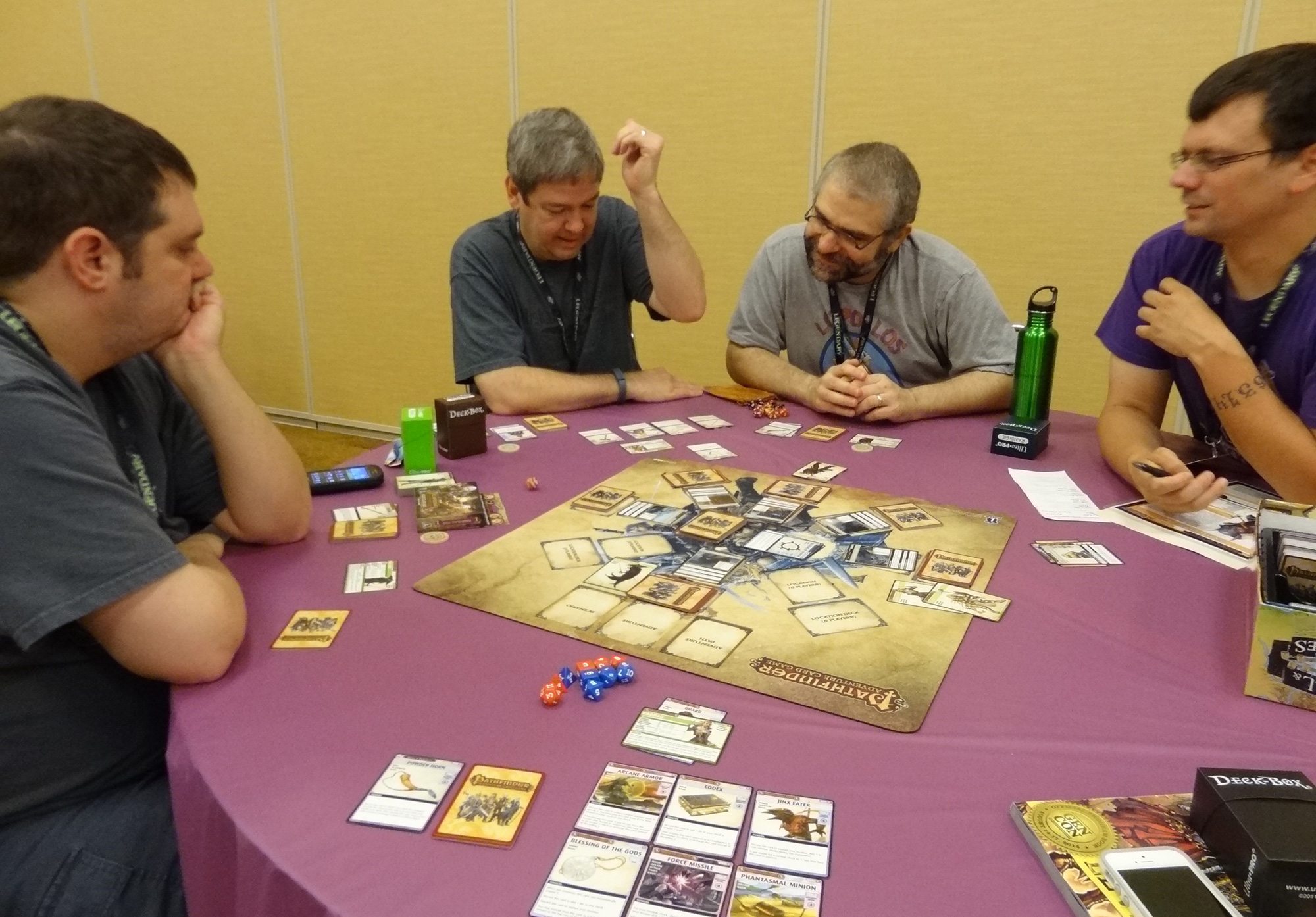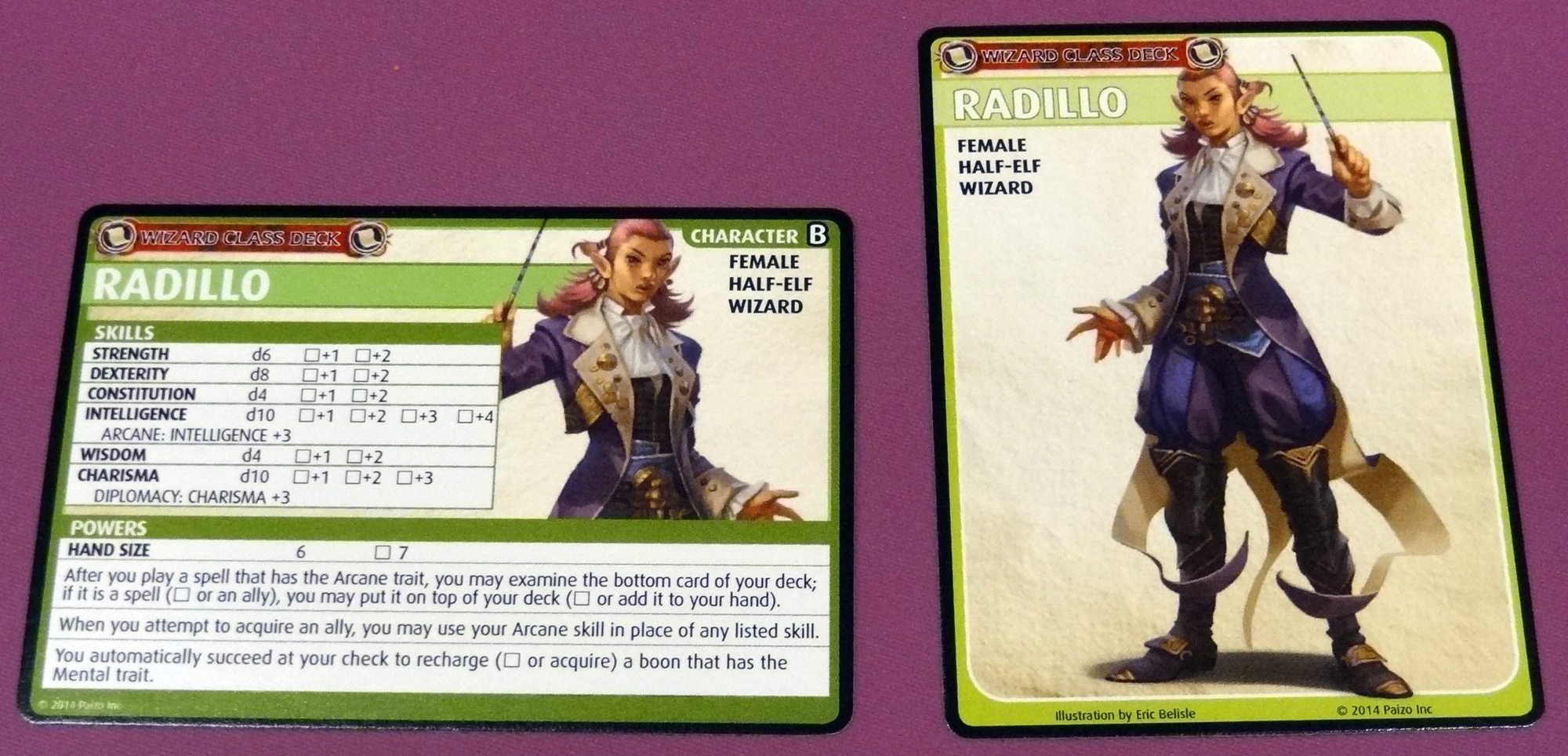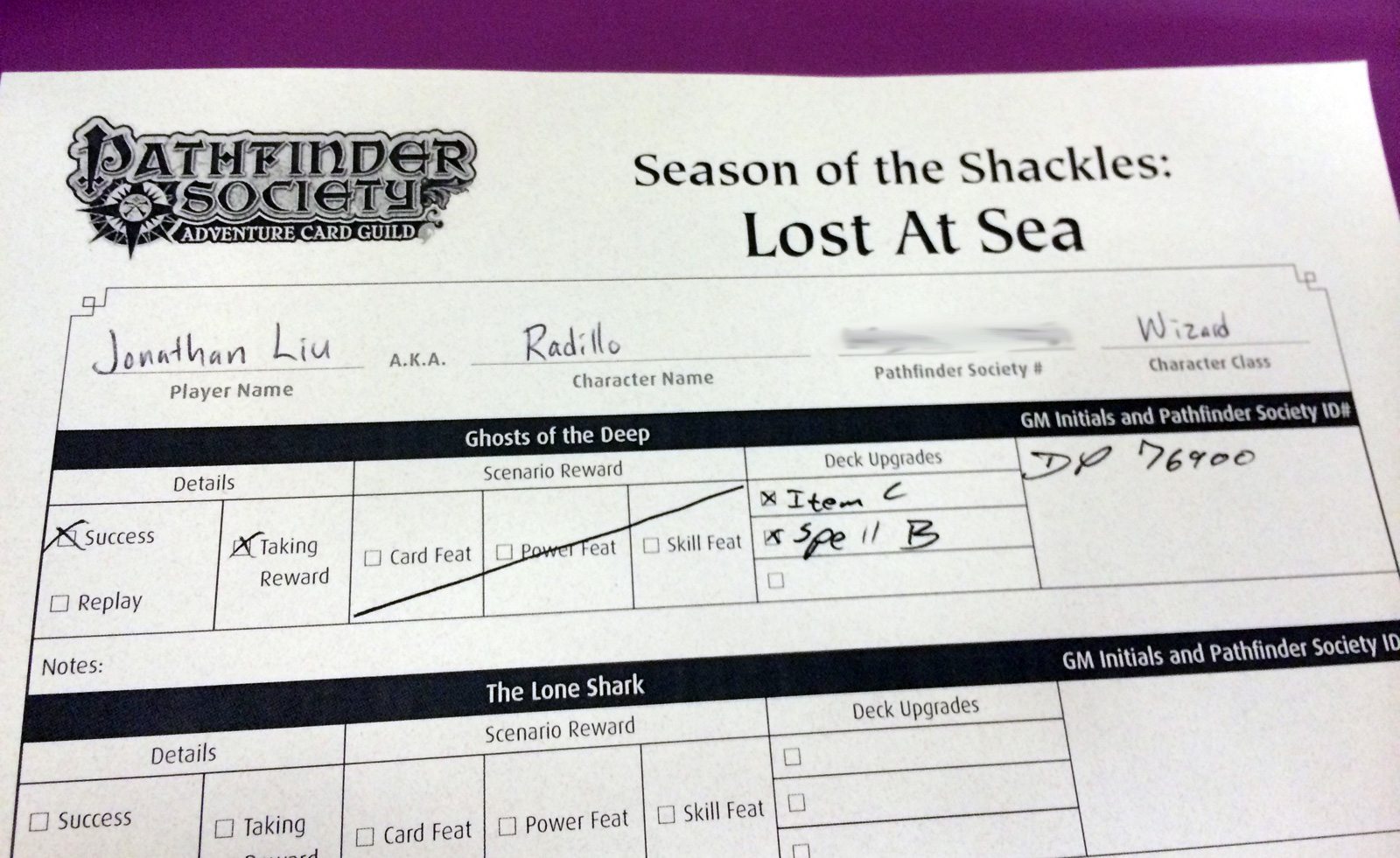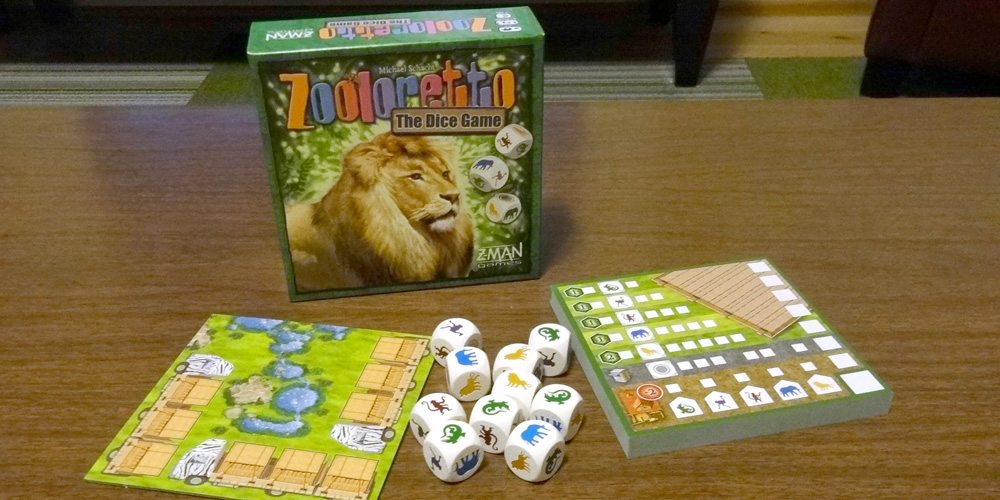
The first event I went to at Gen Con this year was the Pathfinder Adventure Card Game. Although I’d played a prototype demo of the new Skull & Shackles set at GameStorm earlier this year, I was excited to see the finished product. I also wanted to check out Paizo’s new Pathfinder Society Adventure Card Guild. (Yeah, it’s a mouthful.)
In case you’re not already familiar with the Pathfinder ACG, it’s a card game by Mike Selinker based on the Pathfinder role-playing game. You play through the same storyline, but your character is a deck of cards: items, spells, allies, weapons, and so forth. It was my favorite game of 2013, and I’ve been playing with a regular group since Gen Con last year.

This year, Paizo released the next base set: Skull & Shackles, which has a pirate theme. The game uses the same mechanics as the Rise of the Runelords set, but with a few new things. For instance, you now have a ship: it holds loot (which you sometimes get as a reward) and makes it easier for multiple players to travel between location. Sometimes your ship will have to take damage, in which case players must discard cards to prevent it. If you don’t, the ship capsizes and your loot floats away, and then you have to use a Craft check to fix it.
Some of the characters have also been changed slightly from the Rise of the Runelords set, so although the basic mechanics are the same, you’ll want to use the new character cards because their abilities may include things that are specific to the new scenarios (like “swashbuckling”).

Another new addition is the Class Decks.
In the original, you had several characters included in the base game, and a few more that could be purchased in the Character Add-on Deck. (Totally worth it, by the way, both because it expands the game for 5 or 6 players, but also because the added characters are fun to play.) In the original, if you collected new cards during a scenario, those new cards just came from the game box, and you’d get to start with those cards for the next scenario.
That’s fine if you have one consistent group that you play the game with, but it leads to a few limitations. For one, if you wanted to play the Pathfinder ACG with a new group, you’d have to reset the character decks you wanted to use so that there wouldn’t be missing items or armor or whatever. And you’d want to have a record of all the various cards that are in each player’s deck so that you can then reassemble those the next time you play.
The other limitation came up because of Paizo’s Pathfinder Society. For the RPG, you can create a character, and then join in and play at a guild. Since everyone plays through the same scenarios in order, it’s not absolutely necessary to play with the same group each time. If you don’t have a regular group of gamers, you could sign up for Pathfinder Society, grab your character sheet, and show up at an event.
But you can’t easily do that with the card game. Your character is a deck of cards, and you can’t take a few cards from one base set and leave, and go join another group next time. Paizo wanted to have an equivalent of the RPG society, so the Class Decks are the solution to that.
Basically, you pick a class (Wizard, Rogue, Bard, etc.) and buy a deck of cards associated with that class. Each deck actually has four characters in it, so if you pick Wizard you could be Ezren, or you could be Radillo (as I did in the Gen Con demo), or somebody else. They all have subtle differences in their abilities and traits. The Class Deck includes the character cards, the starting set of cards, and then a whole lot of other boons (the good stuff) that can be added into your character’s deck later.
When you finish a scenario and you’ve collected a bunch of cards during the course of the game, you look at the types: items, weapons, spells, blessings, and so on. Then you can select cards of those types from your Class Deck, and put them into your character’s deck. The cards that came from the game itself go back into the big box, and you take your leveled-up character with you. (The cards are helpfully labeled at the top corner so you can easily identify which came from the Class Deck and which came from the base set.)

While the separate Class Decks aren’t strictly necessary if you’re always going to be playing with a consistent group of players (as I’ve been doing). However, if you want to play the Pathfinder ACG and don’t want to invest in the entire shebang or you just don’t have a group of regulars that you can play with, this lets you get into the game with a much lower investment, as long as there are guild events near you. The nice thing is that you can even join in at any guild event.
Right now the Card Guild is still fairly new, so there might not be quite as many events just yet, but check with your local game store and see if they can connect you to your local venture officer, or check the Paizo website to look for events.
I will probably stick with my group of regulars for now: we’ve made it through the first five decks of Rise of the Runelords, with one more to go now that our crazy summer schedules are winding down. After that, I’m eager to set sail for Skull & Shackles!




Hey, that nerd on the left in the top picture is my best friend in the whole world. He is King of All Geeks and knows a thing or two about pushing bits of paper and cardboard around a table for fun. If it’s good enough for him, it’s good enough for everybody else. This is a fun game. Toast-1, out.